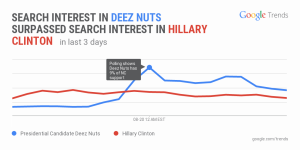“The difference between stupid and genius is that genius has its limits”
– Albert Einstein
We have limits as humans.
Luckily we have not yet reached them in majority of things. But for example, baseball pitcher cannot throw faster than 100 MPH. Although pitcher could get stronger, his tendons and ligaments would just snap throwing it faster.
Throwing the baseball is one aspect of baseball, so that is why there will be plenty of evolution in the baseball. Scientists have calculated that even in other sports the pace of development has slowed down and we are approaching the limits. Actually in some sports like long jump we are getting worse.
Being an optimist, I take there is a still lot to improve for us in humans: whether in sports or in life in general (I don´t know why anyone would make a separation between those two). These developments will happen by either tweaking the small details or reshaping the big picture:
1. Aggregation of marginal gains

“The marginal gains philosophy requires you to look at every single aspect of what you do so you can try and improve it. It looks at every aspect of performance, and tries to improve each a little bit— even just a tenth of a percent . If you find a training technique that makes an athlete that tiny bit stronger , it alone might not have a huge effect on a race. But if you can stack those very small improvements on one another, finding a bit in tires and a bit in the wheels and a bit on the track surface and a bit in nutrition supplements— well, soon those marginal gains begin to add up to big gaps between you and your competition.”
Dave Brailsford on aggregation of marginal gains
Dave Brailsford started as the general manager for Team Sky (Great Britain´s professional cycling team) in 2010. He had the concept laid down in the quote above: if you improve every area related to cycling by just a little bit (most commonly is used 1 percent), then those small gains would eventually add up to bigger improvement. These improvements ranged from the obvious (training, nutrition) to more surprising (every cyclist had their own pillows when they are travelling). The results were outstanding. Brailsford was wrong in believing that Team Sky could win Tour De France in five years. They did it in three.
This works when the competitive field is already mature. Cycling itself is quite established sports, so there is not necessary that much innovation (doping excluded) to be done.
The difference nowadays between agencies is not in the actual ideas, but in the craft. Similar ideas have gotten totally different reception in marketplace and also in award shows. When we essentially are doing the same things, the difference comes in small details.
Has our industry then just become minor improvements and tweaking in quite predictable playing field?
Not necessarily.
2. Disruptive leaps
Disruptive thinking has radically altered the sports. Quite often the change is driven by technology, but sometimes it is also about the different way to approach the challenge in sports.
a) Technology disruption

“I think the players, I put in the book for example that we should go back to wood rackets, probably they laughed at me, I’m a dinosaur, but I think that you see these great players, have even more variety and you see more strategy, there’d be more subtlety.”
John McEnroe (last player to win major tournament with wooden racket)
Technology has played huge role in certain sports, especially in golf driving distance. We are not talking about marginal gains in here; these technologies have truly revolutionized the sports.
Internet has changed the whole ball game in our industry. Either you have digital capabilities, or you are like a guy trying to play with wooden racquet in tennis court. Not only you look stupid, you will also certainly lose.
b) Approach disruption

I adapted an antiquated style and modernized it to something that was efficient. I didn’t know anyone else in the world would be able to use it and I never imagined it would revolutionize the event.
– Dick Fosbury (inventor of Fosbury Flop)
Not always you need a technological breakthrough to change the game. V-style jump in ski-jump or Fosbury flop in high jump are examples when smart individuals outsmarted the competition. They looked the problem from a different angle and found a totally new and more effective way to solve it.
Currently every agency is jumping with the old style, where the room for innovation is limited. When the playing field is the same for everyone, the only way you can win is to search for marginal gains. I truly believe that we could approach our business truly differently and take the whole agency business model to the new heights. It is time to rethink the whole jump.
(Full disclosure: These sports anecdotes were mostly lifted from the great book I just read. The book is done by Mark Mucclusky and is called “Faster, Higher, Stronger. Highly recommended reading)
















